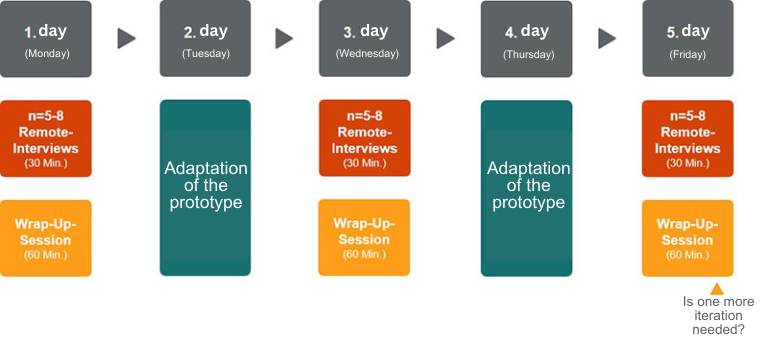The fundamental goal of rapid prototyping is to develop something new in the shortest possible time, which is then improved in several iterative rounds. This can be both a product concept and a prototype from the 3D printer. However, one is not always bound to a physical product idea; the approach is also well suited for advertising campaigns.
In order to align the product, service or advertising campaign with the requirements and needs of (potential) customers, they should also be involved with the help of market research. This helps to ensure that …
the requirements and wishes of customers are taken into account at an early stage.
costly over-engineering is avoided, i.e. product functions actually provide a benefit to the customer.
the design is perceived as appealing by relevant target groups.
ideas that do not stand up to customer opinion are sometimes not pursued further.
How does market research work by using the rapid prototyping approach?
We support our customers with a market research approach that meets the requirements of rapid prototyping. It is particularly important that market research results are available right away, so that the development, engineering or creative teams from the advertising agency can go directly into the revision of the prototype. This means that the time for extensive data analyses and preparation into reports, as in classic market research, is not available in this case, but is often not necessary either.
The rapid prototyping research process can look like this:
We conduct interviews with the relevant target group based on a first draft of test material. During the interviews, we use a digital whiteboard (e.g., Miro) to record findings in real time together with all our client’s stakeholders. After the interviews, this collection is processed and discussed together on the same day and the results are summarized.
With these results, the development teams can start revising the prototype the very next day. Once a revised prototype is available, we conduct the next round of interviews. This continues as long as it is necessary.
The employees involved at SKOPOS are particularly well trained and very experienced in gaining insights in real time and systematically evaluating them together with the customers. This enables us to create a fully developed prototype within a very short time.
Increasingly, our customers also want to incorporate feedback from other markets such as the USA and China into the development of prototypes from the outset, instead of adapting finished products to national requirements at a later stage. This is very easy to do, as we can use the same digital method to involve potential customers from the USA and China through interviews with our native speakers.
If the prototype is subject to high security requirements, there is also the option of conducting the study offline in a test studio.
For whom is this rapid prototyping approach suitable?
Together with our customers, we are currently having very good experiences with this approach in order to achieve and process insights in real time in a cost-efficient, fast and effective manner, where classic market research reaches its limits. We often work with this approach with departments such as pre-development, innovation departments or marketing.
If this approach also sounds interesting to you, feel free to contact us! We will be happy to coordinate the concrete design in terms of target group, content, number and duration of interviews and iterations with you individually.





